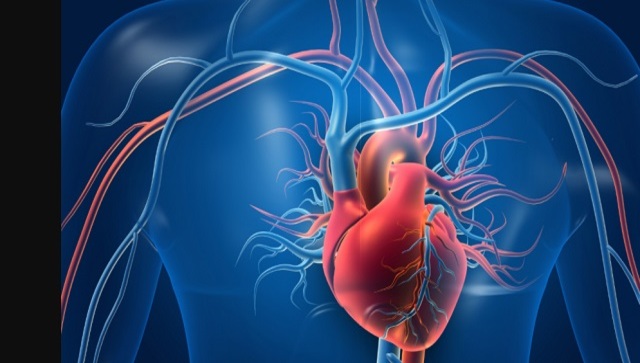Congenital Heart Disease (CHD) by definition is present at birth. It is not very common, but it cannot be dismissed as rare either. The growing field of paediatric cardiology is testimony to how CHD can affect the structure of a baby’s heart, how blood flows through the heart and out to the rest of the body. The cause of CHD among most babies is multifactorial. It could be due to:
- a. Genetic mutations: Down syndrome is a genetic disorder caused when abnormal cell division results in an extra full or partial copy of chromosome 21.
- b. Medication during pregnancy could also cause CHD- for eg; a link has been found between the consumption of thalidomide for the treatment of leprosy and congenital problems (not just the heart)
- c. Children of those who marry late and have pregnancies beyond the age of 40 may have it.
- d. Marrying within the family; could also be a factor.
- e. Viral infections during pregnancy could also cause CHD.
- f. Pre-existing diabetes or obesity, have also been linked to heart defects in the baby.
- g. Smoking during pregnancy as well as alcohol may also be linked to heart defects.
CHD primarily arises because during development in the mother’s womb, there might be open connections that don’t close at birth. The heart starts as a single tube in the womb and develops over time. There can be unusual left-right connections that are formed that create functional issues in early childhood itself. However, for ease of understanding, we will classify them into cyanotic heart disease (bluish colour of the skin and mucous membranes), acyanotic heart disease and miscellaneous. 1. Cyanotic heart disease This involves heart defects that reduce the amount of oxygen delivered to the rest of the body. • Tetralogy of Fallot: This is the most common one and it arises from decreased pulmonary blood flow. Tetralogy of Fallot involves 4 kinds of defects in a single baby heart. • Tricuspid atresia: the valve between the heart’s chambers is not fully formed. The babies have a bluish looking skin colour, called cyanosis, because their blood doesn’t carry enough oxygen. • Transposition of the great vessels: the major blood vessels attached to the heart—the aorta and the pulmonary artery—are reversed. This reversal results in the blood going to the wrong places. This leads to low oxygen levels in the body. 2. Acyanotic heart disease With this type of heart defect, blood contains enough oxygen, but it’s pumped throughout the body abnormally. These defects don’t interfere with the amount of oxygen or blood delivered to the rest of the body • Shunt lesions- this involves structural problems like atrial septal defect (ASD). This is a hole in the wall that separates the heart’s two upper chambers, called the atria. Larger ASDs may require a procedure or heart surgery to close them. The most common one is the ventricular septal defect (VSD). In this case, there is a hole in the wall that separates the heart’s two lower chambers (the ventricles) • Obstructive lesions: Either the aortic valve or the pulmonary valve may be narrowed and not open well. Valves are like one-way doors. When they do not function properly, it is called stenosis. 3. Miscellaneous There are hundreds of different types of birth defects; here are a few of them that don’t fall into the above classes. Anomalous position of the coronary artery is one of them. • Higher origin artery: Instead of its normal position, the coronary artery originates at a higher angle and gets kinked when it dilates due to strenuous exercise or exertion. • Artery takes the wrong course: The artery is wrongly placed in between the aorta and pulmonary artery. Hence, when the child exercises/ or even when an infant cries very loudly, more blood goes through it. The coronary artery gets compressed and causes chest pain. • Mitral stenosis: This very rarely manifests in children and is a narrowing of the mitral valve opening. What is important to remember is that CHD is seen in just 1 percent of the live births and many of them die at a young age. Hence, with age, the percentage seems higher. It is extremely important to screen births for CHD. 1. Some CHDs may be diagnosed during pregnancy using a foetal echocardiogram. However, some heart defects are not found during pregnancy. In these cases, heart defects may be detected at birth or as the child ages. 2. Sometimes, babies born with a critical CHD appear healthy at first. They are sent home before CHD is detected. These babies are at risk of having serious complications within the first few days or weeks of life and may often require emergency care. 3. Newborn screening is a tool that can identify CHD. During a newborn’s first week of life, a pulse oximeter is used to measure the heart rate and percentage of oxygen saturation. It should be more than 95. CHDs are an entire spectrum. Thanks to better medical care and treatment infants with CHDs are living longer and healthier lives. Many children with CHDs are living into adulthood, while in some cases, the CHD starts to affect the body and increase complications: for eg; irregular heart beat (arrhythmias), increased risk of infection in the heart muscle (infective endocarditis), or weakness in the heart (cardiomyopathy). The best way to combat it is by regular screening and treatment. Dr Santosh Kumar Dora, Senior Cardiologist, Asian Heart Institute, Bandra-Kurla Complex, Mumbai is one of the best electrophysiology specialists in the country. He has presented original clinical Electrophysiology papers in conferences held in India and abroad. He has to his credit, publications of many original clinical studies in National and International indexed journals.


)

)
)
)
)
)
)
)
)



